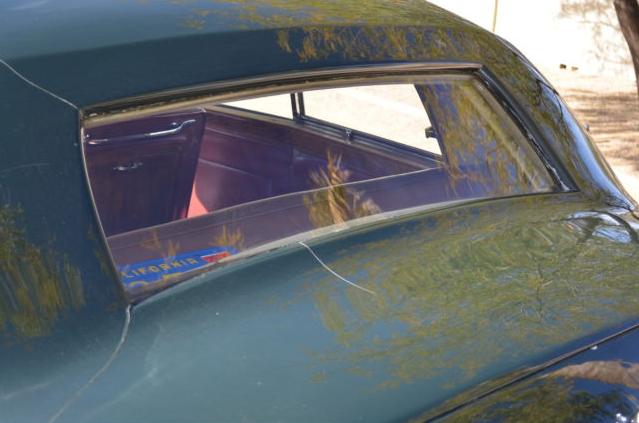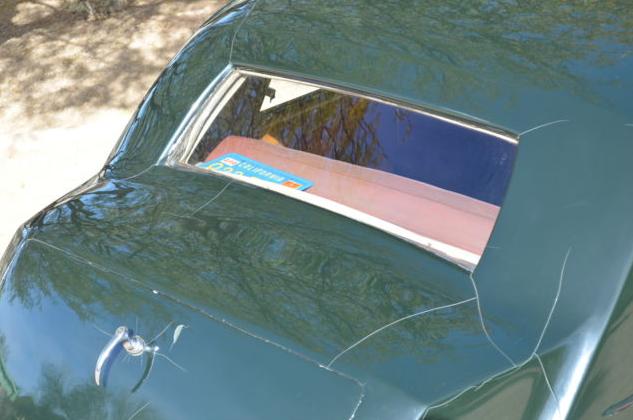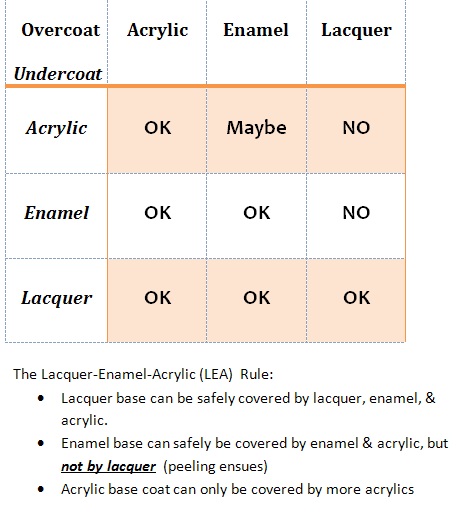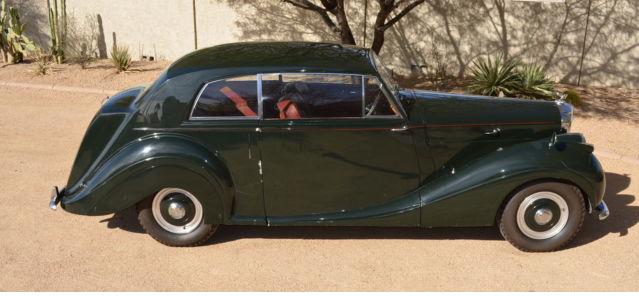| Author | Message | ||
Christian S. Hansen Prolific User Username: enquiring_mind Post Number: 175 Registered: 4-2015 |
What do you suppose has caused this original multi-layer lacquer paint to crack like this? I would like to keep the original paint as it is a "survivor" example...all original...so a re-paint is out of the question, but wonder if there is any way to "treat" this issue? Thanks for any ideas and suggestions.   | ||
ChristopherCarnley Unregistered guest Posted From: 109.148.48.136 |
The outer paint layers have shrunk due to excessive solar gain. (Message approved by david_gore) | ||
David Gore Moderator Username: david_gore Post Number: 2008 Registered: 4-2003 |
Christopher, I wonder if the problem has been a respray putting too thick a coating on the body especially if it is nitrocellulose paint? Someone may have done a quick "tart up" at some stage in the car's life. Using nitrocellulose paints may or may not be legal in Christian's region of California but there may be ways of getting around this problem - it is my understanding nitrocellulose paints are still used by cabinetmakers and musical instrument makers who insist on perfect surface finishes and I suggest Christian does a search using "nitrocellulose paint suppliers" as the key words for up-to-date information on availability and use. | ||
Christian S. Hansen Prolific User Username: enquiring_mind Post Number: 176 Registered: 4-2015 |
Christopher... Thank you for your reply. I, too, had theorized that it might be an aging/shrinkage issue, perhaps exacerbated by a dry climate. David... For the benefit of laymen like myself, by "nitrocellulose" do you mean "lacquer", or something else? Thanks. I realize that paint problems are difficult to diagnose from photos and are best done in person. | ||
David Gore Moderator Username: david_gore Post Number: 2009 Registered: 4-2003 |
Christian, "Lacquer" is a generic term for paint with a smooth high quality finish for demanding applications such as car exteriors, fine furniture and musical instruments such as guitars [cue for Robert Reddington here when he gets back from Ireland]. "Nitrocellulose" is a specific type of paint much loved by pre-WW2 car restorers and traditional cabinet makers. Unfortunately, the carrier for this type of paint has environmental factors which have resulted in its use being restricted or banned in various locations. | ||
Christian S. Hansen Prolific User Username: enquiring_mind Post Number: 177 Registered: 4-2015 |
David... Thank you for that clarification. I now seem to recall from "back in the day" circa 1970s when the use of lacquer was allowable, the term "nitrocellulose lacquer" and it now makes sense. What I was getting at, correct me if I am wrong, was that the paint shops would spray multiple coats of the lacquer with wet sanding in between each coat, and I therefore got the impression that it was possible to respray over a sanded and prepared lacquer paint job without entirely removing the paint (such as enamel which I understand you cannot so successafully, if at all, paint over existing paint) down to bare metal and starting over. If that impression is true, I was wondering if it would therefore be possible to wet sand the existing finish, somehow "fill" in the cracks, and then respray another coat or two in the anticipation of making the "cracks" disappear, if only for a few years? Am I insane or is that "theoretically" a possiblity...in the absence of the environmental regulations restricting the use of lacquer paints? | ||
Brian Vogel Grand Master Username: guyslp Post Number: 1881 Registered: 6-2009 |
Christian, I put this together a couple of years ago when "what can go over what" was under discussion and, lo and behold!, it's useful again:  Brian | ||
Christian S. Hansen Prolific User Username: enquiring_mind Post Number: 178 Registered: 4-2015 |
Brian... As always...thank you. While your chart indicates that any of the paints can go over the lacquer base coats and thus address the environment issues associated with applying another coat or two of lacquer, the more important question is whether there is any way to treat/fill in and then wet sand down, et cetera, the cracks prior to applying another color coat. I would be happy if the "massaged cracks" would simply be less obtrusive, even if they did not blend in and disappear. Anyone else have ideas? | ||
David Gore Moderator Username: david_gore Post Number: 2012 Registered: 4-2003 |
Christian, Surface preparation is the key to any successful paint job closely followed by using the right techniques and equipment. Excessive paint film thickness is a sure-fire way of ensuring cracking/craze cracking of the paint in the future. You have probably seen mention of "bare metal resprays" for classic cars being offered for sale and there is a good reason for this as long as an experienced professional automotive spray painter is doing the work and allowed to do the job properly and not to a price that is too low to allow the surface preparation needed for a quality paint job. I would be asking a recognised classic car restorer to have a look at your car "as is" to suggest appropriate rectification with an estimate of the cost involved so you have a better understanding of what is involved and the potential depletion of the family finances if a successful outcome is to be achieved. It could well be that a professional rectification may cost less than you think and be longer lasting than other alternatives. Spray putty and 2 part body filler may be frowned upon by perfectionists but they can give a good outcome when used properly on damaged paintwork. | ||
Christian S. Hansen Prolific User Username: enquiring_mind Post Number: 179 Registered: 4-2015 |
David... Yes, I suppose that you are correct and that a consultation is in order. Thus far I have done nothing in order to preserve the absolutely original "survivor" aspects of the specimen. Perhaps what I am not grasping is that the original paint finishes of this era were many (16 to 18, I understand) coats of hand rubbed (wet sanded, I suppose?) lacquer which inevitably and for the first 30 years or so results in a durable finish that can take a polishing beating and still have many layers of color underneath, as opposed to the modern primer coat, color coat, clear coat finishes that when scratched, or are razor edge buffed carelessly, immediately show the primer color. Perhaps the downside to those multiple coats is that the thickness, in years after 30 or so, tends to crack like this...or at least that is what I have been lead to understand. Additionally, I was advised that lacquer paint jobs are more easily repaired (color match aside) because the repaired coat is simply like an addition of the original coats and can be sanded and feathered into the existing finish successfully whereas that technique is not suitable on enamel finishes that are not so possible to feather between the old and the new. The problem as I see it is how to "fill in" the "valleys" created by the cracks. Perhaps the idea of using some sort of filler that has had color added to it, liberally applied, and then block sanded smooth would be a possible remedy. I am absolutely opposed, at least for the moment, to take it down to the bare aluminum as I would never be able to afford the 18 coats to be replaced, even if it were possible to get around to environmental concerns and that would forever destroy the ability to enter in the "survivor" class at shows. In the end, it comes back to your suggestion...consult an experienced professional. Thanks. Here's another photo of the unique coachwork. Fortunately the cracking only shows within the proverbial 20' radius!!  | ||
christopher carnley Unregistered guest Posted From: 109.149.198.144 |
Christian, In your post you state that the paint system is original. Any remedial touch ups will show up like the veins on an English woman. The paint system used then was usually 4 coats of nitrocellulose lacquer over an oven baked layer of filler over a priming layer. The harder, flatter filler is showing through,as the colour coats have shrunk. The only way to achieve a satisfactory finish is by a bare metal strip and a two pack respray, as much s I hate them. (Message approved by david_gore) | ||
Mark Luft Experienced User Username: bentleyman1993 Post Number: 48 Registered: 10-2016 |
Christian, I just saw this thread and wanted to respond to you. While your cracks can't dissapear, you can hide them by using a colored car wax. Wax residue is mostly what you are seeing. When typical car wax dries, it dries white, and whatever is hiding in those cracks dries white too. The cure is to first remove the old wax with a wax removing solution like Prepsol. Once the old wax is gone, re wax your lovely car with a colored wax in (as close as you can find) your cars color. I think Turtle wax as well as others make colored wax for cars. It will not make the cracks disappear, but it will hide them. Good Luck! | ||
gordon le feuvre Prolific User Username: triumph Post Number: 186 Registered: 7-2012 |
Seem to recall some one at Crewe telling me 14 coats painted on and flatted between each coat mean't that car ended up with effectively 7 coats. Looking at your car from my 60's/70's paint shop experience, I would say there is just too much paint thickness. Mark has only reasonable "fix" apart from full strip to bare metal and start again. We tried just sanding top coats/ thinning paint and refinishing in past as cheaper fix- it does not work!! |